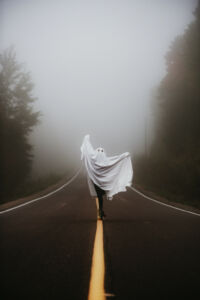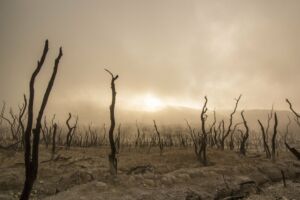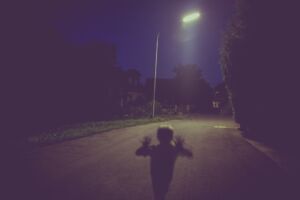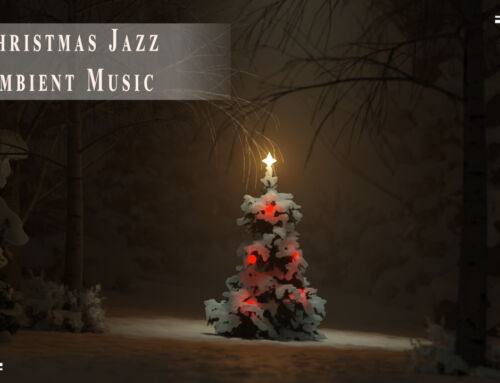 How to Write a Ghost Story for the Modern Age
How to Write a Ghost Story for the Modern Age
It was a dark and stormy night… may not be the best way to start a modern age ghost story. The final decision will be yours, of course, but aim to avoid cliches unless you are playing with them on purpose or it truly fits the atmosphere of the opening scene. Now let’s look a little further into writing a modern age ghost story.
Ghost stories have been around for centuries. The Victorians were particularly avid fans, and people were more susceptible to a belief in the fantastical with less scientific reasoning to contradict paranormal suspicions. But what exactly defines a ghost story? To understand this, let’s explore the differences between a ghost story and, its close relative, the horror story. Both are designed to scare the living daylights out of their audience, but this is achieved in very different ways.
The Horror Story
 Most of us will have seen a horror movie (Scream, Halloween, The Exorcist) and/or read horror novels (Point Horror, The Shining, Dracula). What is notable about this genre is the depictions of extreme violence and murder, complemented by a heavy dose of blood and gore. An everyday situation rapidly declines into one of complete and utter chaos.
Most of us will have seen a horror movie (Scream, Halloween, The Exorcist) and/or read horror novels (Point Horror, The Shining, Dracula). What is notable about this genre is the depictions of extreme violence and murder, complemented by a heavy dose of blood and gore. An everyday situation rapidly declines into one of complete and utter chaos.
The Ghost Story
By contrast, ghost stories tend to use more subtle techniques to evoke feelings of terror. Everything about a scenario appears to be perfectly ordinary. Familiarity in relation to both the reader and the character(s) is key to making the story believable. But all too soon, it will become apparent that something isn’t quite right. A feeling of unease will trigger our imagination, feeding on what truly frightens us.
“The best ghost stories don’t have ghosts in them.” Roald Dahl
When we think of ghosts, we conjure up images of white sheets with black holes for eyes and a mouth, or a flickering transparent hologram hovering in the corner of a darkened room. But this is an outdated idea or child’s play, best reserved for Halloween. Haunted houses, witches, ghastly ghouls and eerie spectres are all common tropes best avoided. In this age of scientific fact, we are too cynical or just too familiar with such tired notions.
A ghost story of the modern age should be far more original. This may be the biggest challenge you will face in writing such a story, but it will increase your chances of grabbing the audience’s attention and writing something memorable. It should still subtly build tension, starting with something as vague as a menacing feeling or sensation in one of the main characters – or just a presence on the periphery. Your imagination is left to do its work. Have a think about your deepest fears. What is it you’re most afraid of? It could be abandonment, an uncertain future, losing someone you love or betrayal. This fear should form the backdrop to the entire story.
The atmosphere is the cornerstone of a successful ghost story.
Tension should build up gradually throughout; normality slowly shifting to a position of uncertainty. As characters remain blissfully unaware that anything is wrong, feelings of doubt and anxiety start to creep into the mind of the reader. Mere suggestions of something lurking in the background can be used to powerful effect. Something glimpsed out of the corner of an eye. An innocuous sound suddenly appears threatening. Consider the pace of the narrative – would an acceleration over the duration work well? Or perhaps slow and steady would add to the mood. Short stories lend themselves well to this genre as they allow you to maintain a high level of suspense. Telling the story across fewer pages can make this easier to accomplish.
 When setting the scene, use as much detail as you can to make it feel familiar and more believable. Allow the reader to feel as though this could happen to them. Make them feel as though they are there, watching the story unfold. As the story develops, the character(s) will become aware that something is amiss. The aim is to cause the reader to have physical reactions such as goosebumps, hairs standing on end and a rapid heartbeat.
When setting the scene, use as much detail as you can to make it feel familiar and more believable. Allow the reader to feel as though this could happen to them. Make them feel as though they are there, watching the story unfold. As the story develops, the character(s) will become aware that something is amiss. The aim is to cause the reader to have physical reactions such as goosebumps, hairs standing on end and a rapid heartbeat.
Ghost stories are often left open-ended, with many questions unanswered, forcing the reader to face up to their own fears. This will leave them with much to think about, long after the eeriness is over!
If you wish to read an insightful article on writing a traditional ghost story then take a look at How to Write a Victorian Christmas Ghost Story or, before you start writing your story, have a read of some other modern ghost stories.




Leave A Comment